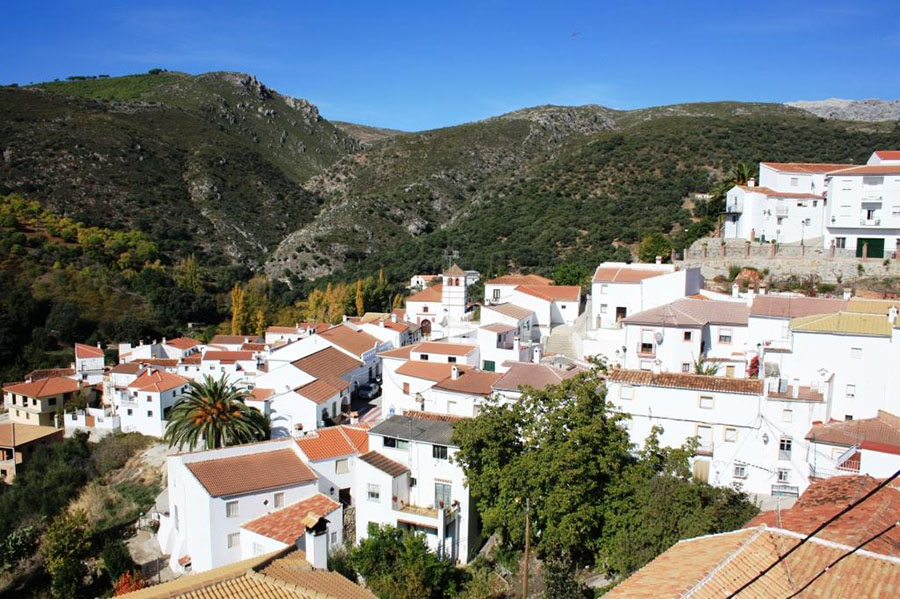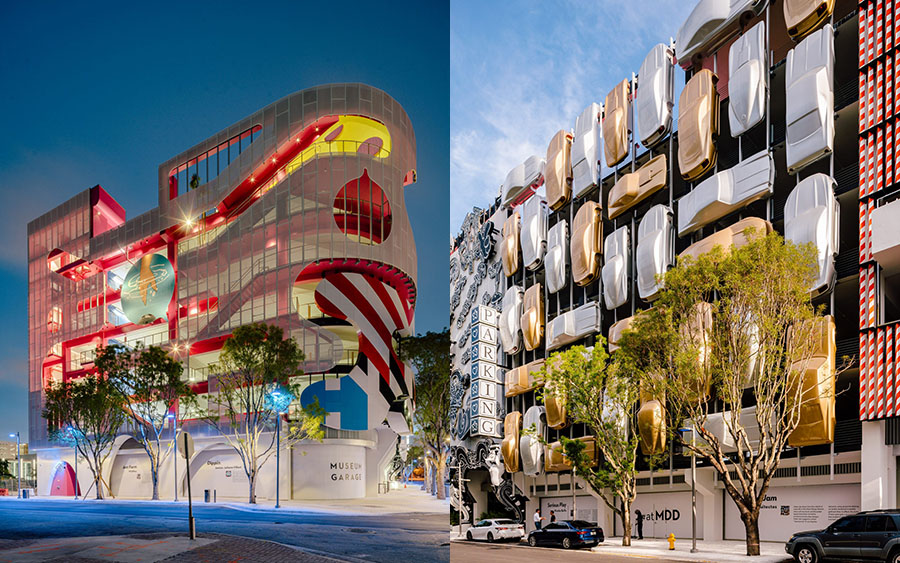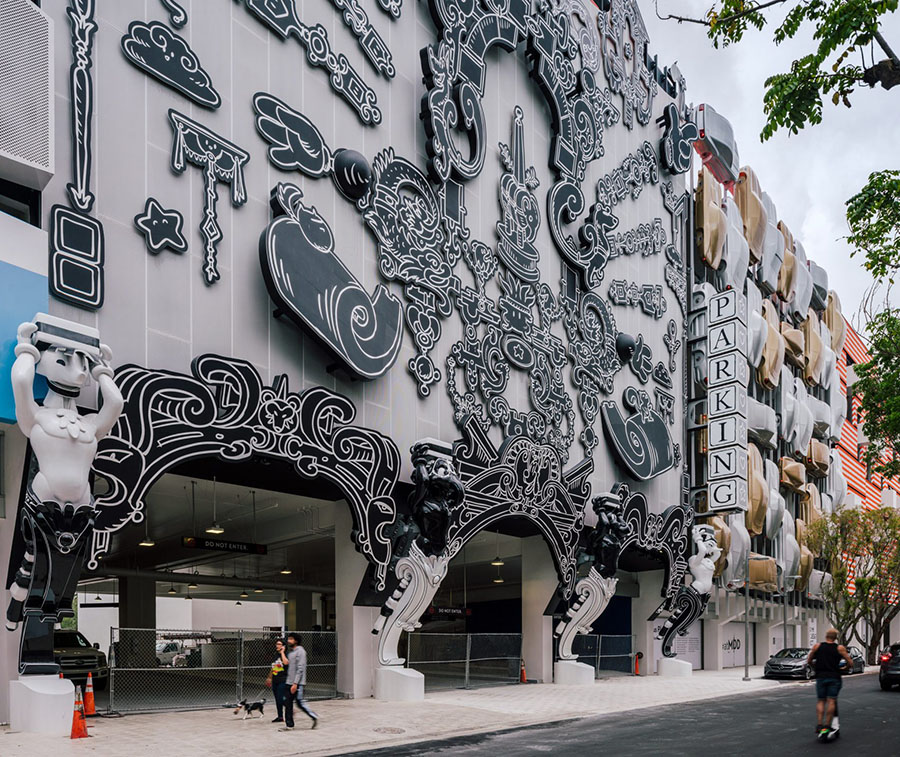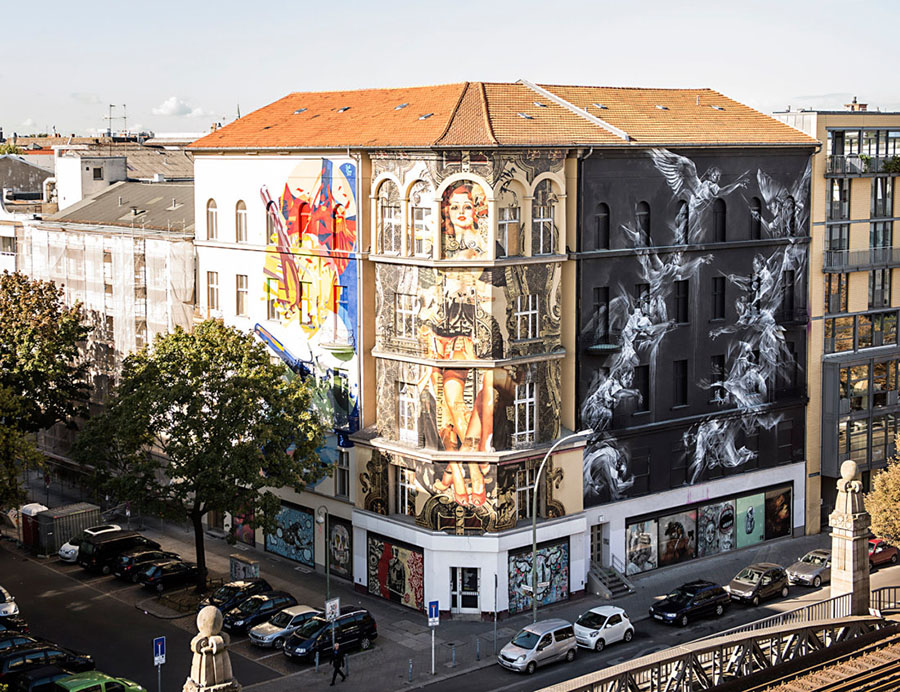Working with form and space is of great importance in architecture. However, it is the color that forms the final artistic and architectural image. With the help of color, you can distinguish a building from the crowd, even without using complex design solutions. Colored buildings remain «sunny» even on the most cloudy days and are always pleasing to the eye. We hope that a selection of the brightest and most colorful houses will add positive emotions and cheer you up. |
Hundertwasser House, Vienna, AustriaAlmost all buildings designed by the Austrian artist and architect Friedensreich Hundertwasser can be included in this selection. However, Hundertwasser himself was most proud of this particular house, built in Vienna at the intersection of Löwengasse and Kegelgasse streets. The building immediately attracts attention with its bright multi-colored facade with mosaic elements of broken glazed tiles, varied shape of windows and the absence of right angles and even lines, as well as trees and other plants growing right on the roof.All this is not done for the sake of shocking. The fact is that Hundertwasser considered modern cities to be cancerous tumors on the body of the Earth. To «cure» them, he strove to destroy the limitations of the usual forms and create in their place a plastic multi-colored architecture.Despite such an original appearance, this is an ordinary residential building, where 52 apartments are located, 4 of which are reserved for offices.  Photo: venagid.ruCasa Batlló, Barcelona, SpainCasa Batlló is rightfully considered one of the brightest projects of Antoni Gaudí. In 1904, undertaking the reconstruction of this building, built by Josep Puig i Cadafal, the architect decided to keep its structure, but radically change the facade and interiors.The decor of the facade, thanks to a special finishing technique using ceramic circles of different colors and diameters, resembles an undulating water surface. The original creative style of Gaudi manifested itself not only in the design of the facade, but also in the decoration of the roof, which looks like the back of a dragon. A rich palette of multicolored ceramics was also used in the interior patio and interior decoration. Photo: venagid.ruCasa Batlló, Barcelona, SpainCasa Batlló is rightfully considered one of the brightest projects of Antoni Gaudí. In 1904, undertaking the reconstruction of this building, built by Josep Puig i Cadafal, the architect decided to keep its structure, but radically change the facade and interiors.The decor of the facade, thanks to a special finishing technique using ceramic circles of different colors and diameters, resembles an undulating water surface. The original creative style of Gaudi manifested itself not only in the design of the facade, but also in the decoration of the roof, which looks like the back of a dragon. A rich palette of multicolored ceramics was also used in the interior patio and interior decoration.   Houses on Burano island, Venice, ItalyBright facades of houses arise not only thanks to the fantasies and designs of great architects. Sometimes the reasons for painting buildings in different colors are very prosaic. So, the inhabitants of houses on the island of Burano, located in the Venetian lagoon, have long sought to clearly distinguish between their possessions and the plots of neighbors, which is why the colors of the facades of neighboring houses are so different from each other. According to another version, the multi-colored facades served as a kind of landmarks for fishermen. One way or another, today this Italian island has become a real paradise for photographers. You can get here by water taxi departing from Venice. Houses on Burano island, Venice, ItalyBright facades of houses arise not only thanks to the fantasies and designs of great architects. Sometimes the reasons for painting buildings in different colors are very prosaic. So, the inhabitants of houses on the island of Burano, located in the Venetian lagoon, have long sought to clearly distinguish between their possessions and the plots of neighbors, which is why the colors of the facades of neighboring houses are so different from each other. According to another version, the multi-colored facades served as a kind of landmarks for fishermen. One way or another, today this Italian island has become a real paradise for photographers. You can get here by water taxi departing from Venice.   Photo: Travelbeta Juscar village, SpainAn amazing effect can be achieved even using only one bright shade. For example, the unremarkable Spanish village of Juscar with its nondescript white houses became very popular among tourists, when all the buildings in it were painted blue and blue for the presentation of the well-known children’s cartoon «The Smurfs». Initially it was planned that such coloring of houses is temporary, but the locals liked living in colorful houses so much that they decided to leave everything as it is. Today the village of Khuskar even has a second, unofficial name, and many call it «the village of the smurfs». Photo: Travelbeta Juscar village, SpainAn amazing effect can be achieved even using only one bright shade. For example, the unremarkable Spanish village of Juscar with its nondescript white houses became very popular among tourists, when all the buildings in it were painted blue and blue for the presentation of the well-known children’s cartoon «The Smurfs». Initially it was planned that such coloring of houses is temporary, but the locals liked living in colorful houses so much that they decided to leave everything as it is. Today the village of Khuskar even has a second, unofficial name, and many call it «the village of the smurfs».   Pixel Building, Melbourne, AustraliaArchitects are increasingly striving to brighten the look of not only residential buildings. For example, the four-story, futuristic Pixel Building, which resembles an installation made of shards of colored glass and built in 2010, is an office center. Multi-colored facade panels not only make the building recognizable, their equally important function is the regulation of natural light in interiors and natural ventilation of the air, which can significantly reduce energy costs.    Museum Garage, Miami, USASome cities have entire neighborhoods associated with vibrant architecture and creative design concepts. In Miami, this is the Miami Design District, where even an ordinary parking lot has its own unique look. This is the Museum Garage building , which was designed simultaneously by four studios: Clavel Arquitectos, J. Mayer H, K / R and WORKac, with the participation of French artist Nicolas Buffet. As a result, one facade combines a giant multi-colored puzzle, anime characters, bright car models and other original images. Museum Garage, Miami, USASome cities have entire neighborhoods associated with vibrant architecture and creative design concepts. In Miami, this is the Miami Design District, where even an ordinary parking lot has its own unique look. This is the Museum Garage building , which was designed simultaneously by four studios: Clavel Arquitectos, J. Mayer H, K / R and WORKac, with the participation of French artist Nicolas Buffet. As a result, one facade combines a giant multi-colored puzzle, anime characters, bright car models and other original images.   Museum for Urban Contemporary Art, Berlin, Germany Museum for Urban Contemporary Art, Berlin, GermanyThe so-called street art makes a great contribution to the design of modern cities and giving them a bright, expressive appearance. In 2017, the world’s largest Museum of Contemporary Urban Art opened in Germany. His building is a real chameleon. The decor of its facade is replaceable. The panels on which the graffiti is painted are periodically changed, and some of them, if the size allows, are transferred to the internal exhibition.   Huangjuping Street, Chongqing, ChinaIn China, street artists have gone even further. Chongqing city officials have given them an entire 1.2-kilometer-long street. More than 300 artists and designers decorated the gray high-rise buildings of the same type with colorful graffiti and images of cartoon characters. They could be joined by all interested local residents, whose imagination was not limited by anyone, everyone could draw anything. The result was rather ambiguous, but the main thing here is that it was the largest project to decorate the urban environment in which the local authorities collaborated with street artists. Nowhere in the world on such a scale was there anything like it. Huangjuping Street, Chongqing, ChinaIn China, street artists have gone even further. Chongqing city officials have given them an entire 1.2-kilometer-long street. More than 300 artists and designers decorated the gray high-rise buildings of the same type with colorful graffiti and images of cartoon characters. They could be joined by all interested local residents, whose imagination was not limited by anyone, everyone could draw anything. The result was rather ambiguous, but the main thing here is that it was the largest project to decorate the urban environment in which the local authorities collaborated with street artists. Nowhere in the world on such a scale was there anything like it.   Towers «Tokyo», Moscow, RussiaThere are also many architectural projects with colorful facades in Russia. More recently, last December, 6 Tokyo towers were added to them, located in the Etalon City residential complex. The project, designed by Sergei Tchoban (SPEECH architectural bureau), includes a giant panel on the facades of high-rise buildings. The panel shows an engraving by Katsushiki Hokusai — a giant wave. This wave covers all 6 towers, and the total area of the image is almost 60 thousand square meters. Fragments of the painting were applied to the panels of the hinged ventilated facade, and its palette includes 10 different colors. The panels were painted using ultraviolet printing technology. To keep the painting as long as possible, Towers «Tokyo», Moscow, RussiaThere are also many architectural projects with colorful facades in Russia. More recently, last December, 6 Tokyo towers were added to them, located in the Etalon City residential complex. The project, designed by Sergei Tchoban (SPEECH architectural bureau), includes a giant panel on the facades of high-rise buildings. The panel shows an engraving by Katsushiki Hokusai — a giant wave. This wave covers all 6 towers, and the total area of the image is almost 60 thousand square meters. Fragments of the painting were applied to the panels of the hinged ventilated facade, and its palette includes 10 different colors. The panels were painted using ultraviolet printing technology. To keep the painting as long as possible,  «Center for Pediatric Hematology, Oncology and Immunology», Moscow, RussiaThe functional purpose of some architectural structures is such that their design must necessarily be bright and positive. The architecture of hospitals, especially children’s hospitals, is a special kind of architecture that should be imbued with a life-affirming atmosphere and, by its very appearance, inspire hope for recovery. The «Center for Pediatric Hematology, Oncology and Immunology», built according to the project of A. Asadov’s architectural bureau, was developed with this principle in mind. According to the architect, the idea of the center was suggested to him by doctors, who asked to make «a very optimistic building.»All the colors of the rainbow enliven the various architectural elements of the building, they are scattered throughout the center and all come together on the facade of one of the buildings. This rainbow, which since ancient times has been considered a symbol of hope, illuminates all other buildings with its light, so that the hope of children and their parents for recovery penetrates into every corner.   If you dream of personal exclusive architecture, you better turn to the professionals here ink-a.com |

Подписаться
авторизуйтесь
Пожалуйста, войдите, чтобы прокомментировать
0 комментариев
Старые